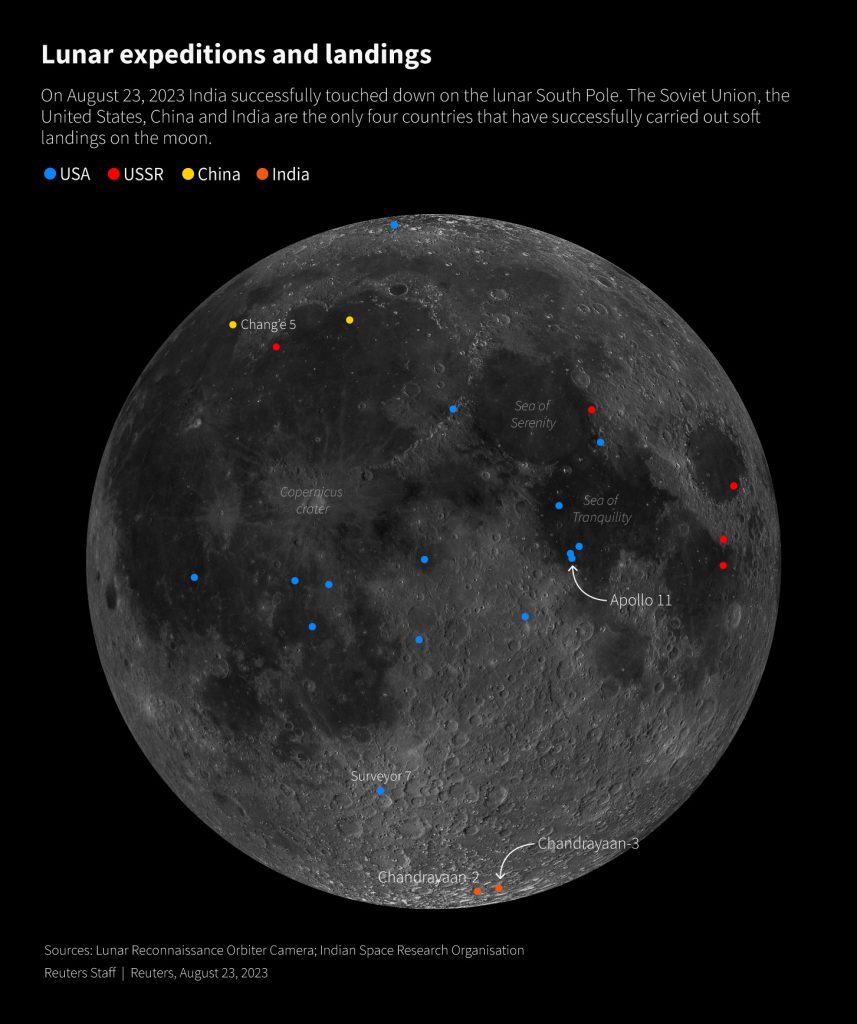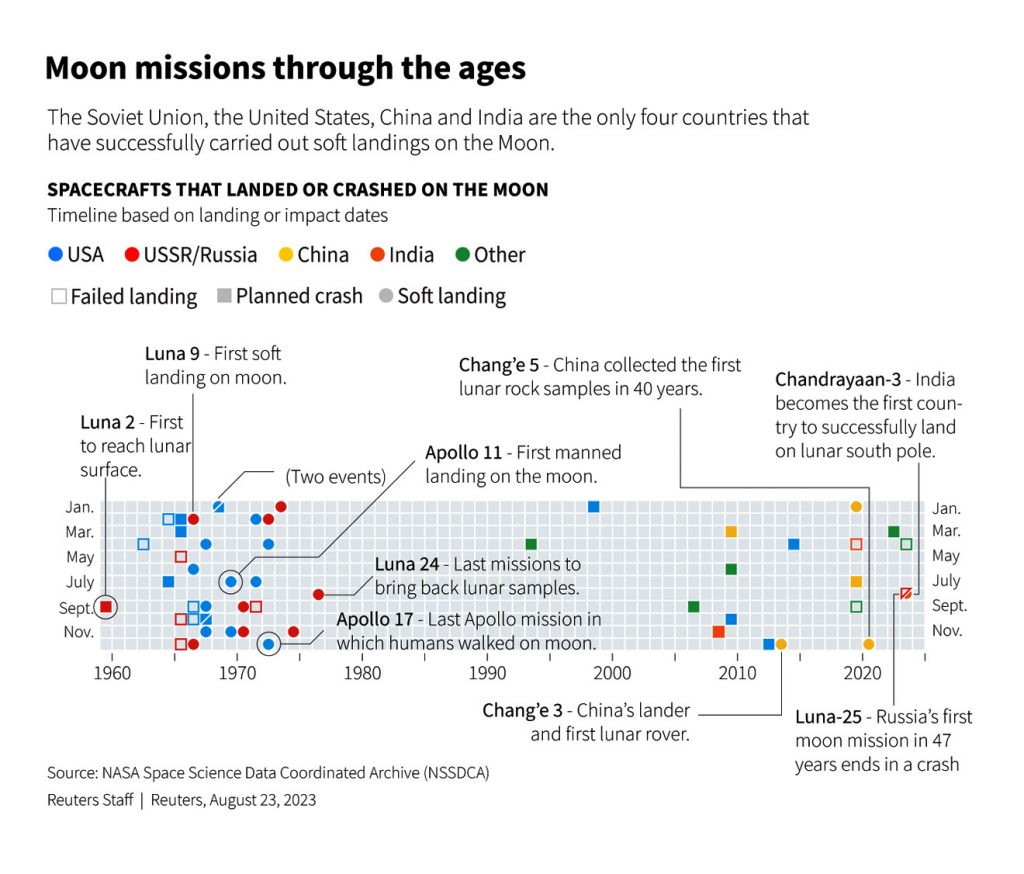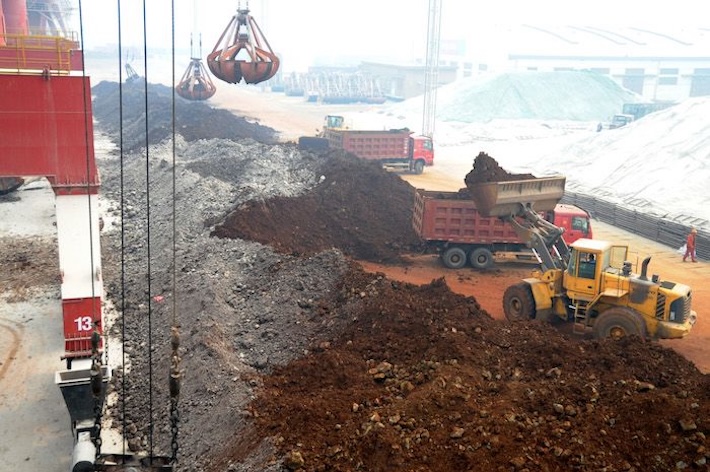India’s rover exited Chandrayaan-3 on Thursday and began its exploration of the lunar surface after the spacecraft made a historic landing on the unexplored south pole of the moon.
“The Ch-3 Rover ramped down from the Lander and India took a walk on the moon!” the Indian Space Research Organisation (ISRO) said in a post on X, formerly known as Twitter.
The moon rover, dubbed ‘Pragyan’, will conduct experiments to help future probes to the moon’s south pole.
Also on AF: India’s Chandrayaan-3 Makes Historic Landing on the Moon
The region is coveted because of its water ice, which is believed to be capable of providing fuel, oxygen, and drinking water for future missions, but its rough terrain makes landing challenging.
Chandrayaan-3’s soft, textbook touchdown in the area made India the first country to achieve this feat.

ISRO chief S Somanath said the Pragyan rover had two instruments to conduct element and chemical composition experiments.
“More than that it will do the roving on the surface, we will also do a robotic path planning exercise which is very important for us for future exploration,” Somanath told Indian news agency ANI.
Accomplished with a budget of about 6.15 billion rupees ($75 million), less than the cost to produce the 2013 Hollywood space thriller “Gravity”, this was India’s second attempt to touch down on the moon.
A previous mission in 2019, Chandrayaan-2, successfully deployed an orbiter but its lander crashed.
Chandrayaan means “moon vehicle” in Hindi and Sanskrit. Chandrayaan-3 is expected to remain functional for two weeks, while its solar-powered equipment runs a series of experiments.
‘Mars, Venus next’
The Chandrayaan-3 spacecraft made its historic landing on the moon’s far side on Wednesday evening, days after Russia’s Luna-25 failed in a similar attempt.
Space agency ISRO shared pictures from the spacecraft showing the moon’s surface and the leg and shadow of the lander.
Chandrayaan-3 Mission:
The image captured by the
Landing Imager Camera
after the landing.It shows a portion of Chandrayaan-3’s landing site. Seen also is a leg and its accompanying shadow.
Chandrayaan-3 chose a relatively flat region on the lunar surface 🙂… pic.twitter.com/xi7RVz5UvW
— ISRO (@isro) August 23, 2023
ISRO’s Somanath said the successful landing has given India confidence to extend its reach to possible voyages to Mars and Venus.
India is also planning to launch a mission in September to study the sun, Somanath said. A human space flight is also planned and, while no official date has been announced, preparations are likely to be ready by 2024.
The success of the mission is also a shot in the arm for Indian Prime Minister Narendra Modi, who is courting investment in private space launches and related satellite-based businesses.
Euphoria on Indian streets
Chandrayaan-3’s successful landing sparked widespread jubilation and celebration in the world’s most populous country.
Scientists and officials clapped, cheered and hugged each other as the spacecraft landed and people across India broke out in celebration, setting off firecrackers and dancing in the streets.
Besides boosting India’s standing as a space power and its reputation for cost-competitive space engineering, the landing is also seen as a major moment of national pride.

Modi said he was being congratulated by everyone since Wednesday evening and the world saw the successful landing not as one country’s achievement but that of all of humanity.
Indian newspapers had banner headlines screaming “The moon is Indian”, “India goes where no nation’s gone before”, and “India lights up the dark side of the moon”, among others.
“Lunar landing is the most significant Indian scientific achievement,” the Times of India newspaper said in an editorial.
“If India is now in a position to harvest the benefit of a spurt in interest in basic sciences there’s one reason: ISRO,” it said.
- Reuters, with additional editing by Vishakha Saxena
Also read:
India’s Chandrayaan-3 Moon Mission Shares Historic Photos – BBC
China to Begin Building Moon Base With Lunar Soil by 2028
China Looking to 3D Print Lunar Buildings Using Moon Soil
Musk Meets Modi, Keen to Bring Starlink to India Soon























